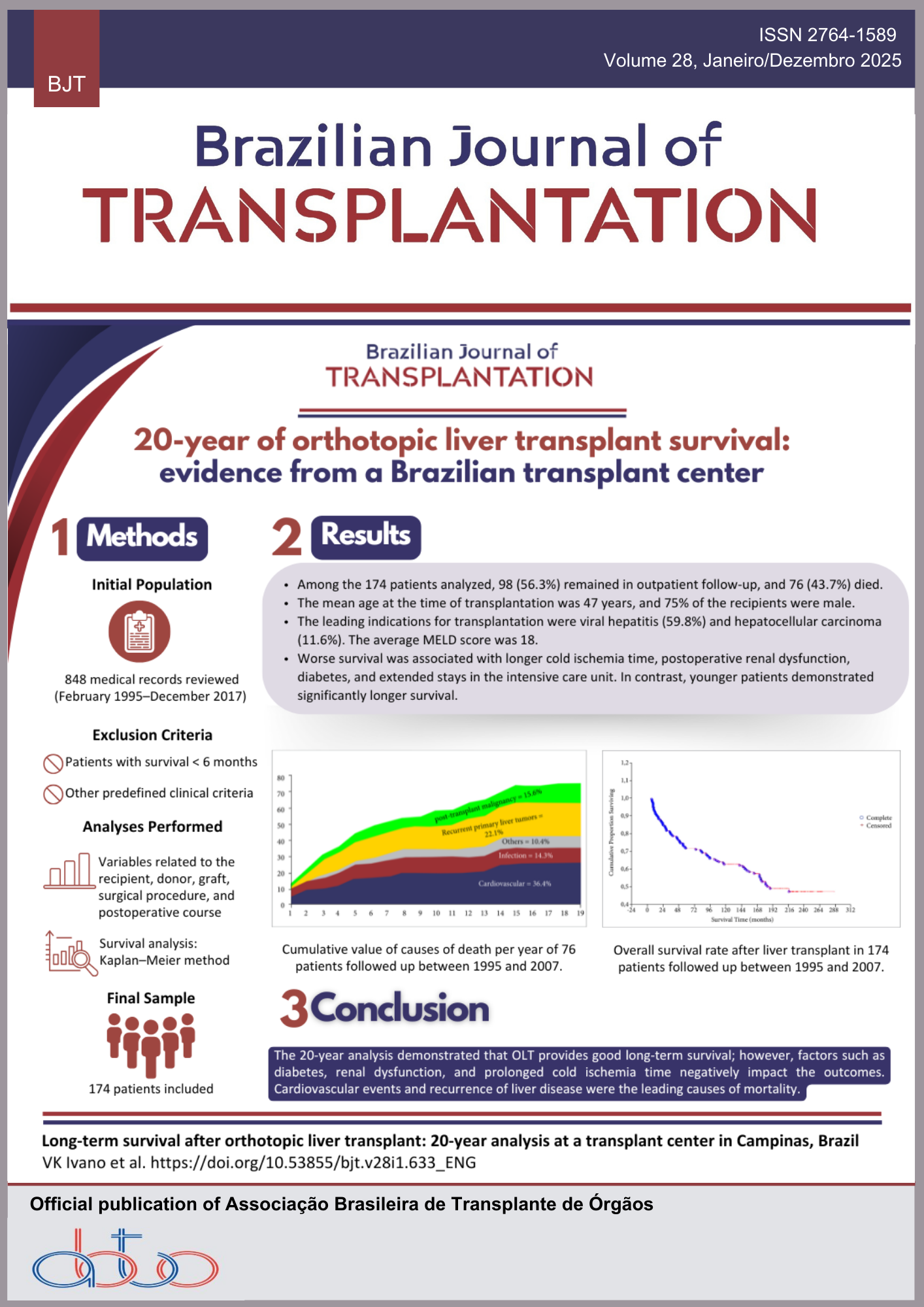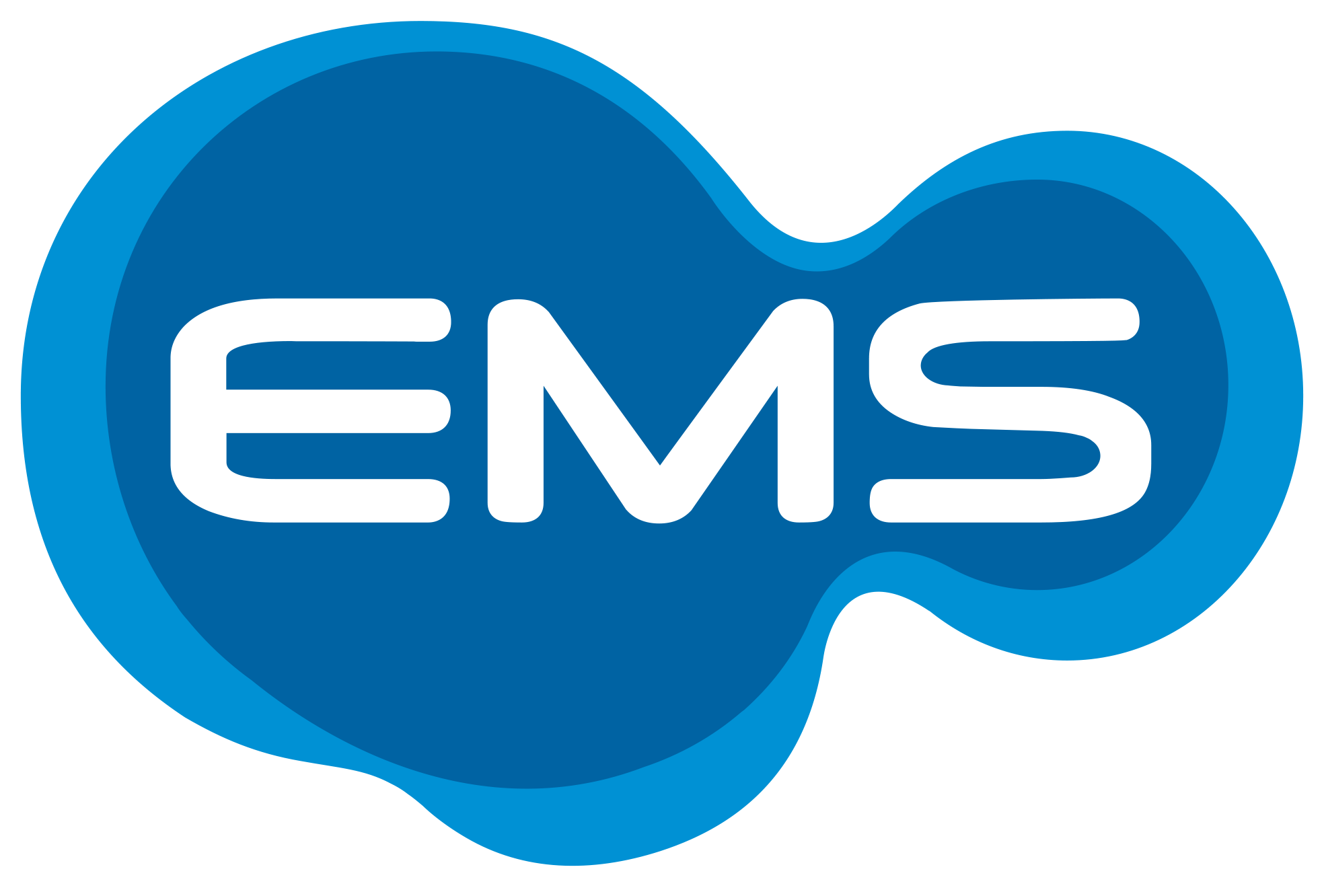Assessment of the Impact of Clinical Pharmaceutical Care in Heart or Lung Transplant Patients: Correlation Between Health Literacy and Medication Adherence
Keywords:
Health Education, Pharmaceutical Services, Functional Literacy, TransplantationAbstract
Introduction: In Brazil, organ transplant activity began in 1964. In 1968, the first heart transplant was performed; years later, in 1989, the first lung transplant was conducted. This therapeutic alternative for terminal diseases has grown in recent years and, due to its complexity, requires a multidisciplinary team. Focusing on pharmacotherapy, the study addresses the importance of clinical pharmaceutical care in heart or lung transplant patients, highlighting the challenges of medication adherence and low health literacy, crucial factors for clinical outcomes. Objectives: To measure health literacy and medication adherence in heart or lung transplant patients during pharmacotherapeutic follow-up to identify the correlation between these indicators and compare them before and after the educational pharmaceutical intervention proposed in the study. Methods: A prospective and single-center study conducted at the Heart Institute of the Hospital das Clínicas of the University of São Paulo Medical School with 14 transplant patients (7 heart and 7 lung) from July to December 2024, using the Test of Health Literacy (TLS) and the Brief Medication Questionnaire (BMQ). Results: There was a significant improvement with p < 0.001 in post-intervention health literacy (mean from 77 to 87 points). Among the individuals, 64.3% were male, 78.6% had completed high school, and the average age was 43.6 ± 13.8 years. The correlation between TLS and BMQ revealed that 43.2% of medication adherence can be explained by health literacy. Conclusion: It can be inferred that clinical pharmacist interventions are capable of modifying health literacy, which consequently alters medication adherence.
Downloads
References
1. Pêgo-Fernandes PM, Garcia VD. Situação atual do transplante no Brasil. São Paulo Med J 2010; 128(1): 3-4. https://doi.org/10.1590/S1516-31802010000100001
2. Diretriz Brasileira de Insuficiência Cardíaca Crônica e Aguda. Arq Bras Cardiol 2018; 111(3): 436-539. https://doi.org/10.5935/abc.20180190
3. Associação Brasileira de Transplante de Órgãos. Veículo Oficial da Associação Brasileira de Transplante de Órgãos. ABTO; 2022. Available from: https://site.abto.org.br/wp-content/uploads/2022/08/RBT-2022-1semestre-POPULAcao.pdf
4. Associação Brasileira de Transplante de Órgãos. Veículo Oficial da Associação Brasileira de Transplante de Órgãos. ABTO; 2023. Available from: https://site.abto.org.br/wp-content/uploads/2023/08/RBT-2023-Semestre-1-Populacao.pdf
5. Pêgo-Fernandes PM, Faria GF. A importância do cuidado multiprofissional. Diagn Tratamento; 2021. 26(1): 1-3. Available from: https://periodicosapm.emnuvens.com.br/rdt/article/view/158/
6. Fonseca PIMN. Emoções vivenciadas pela equipe multiprofissional de uma central de transplantes em entrevista familiar. Dissertation [Master’s in Health Care Sciences] – Universidade Federal Fluminense; 2013. Available from: https://app.uff.br/riuff/handle/1/1086
7. Grangeiro AKP, Belém MO. O papel do farmacêutico clínico na unidade de terapia intensiva adulto. Cadernos ESP. 2022; 16(4): 75-83. https://doi.org/10.54620/cadesp.v16i4.798
8. Silva KL, Araújo IB. Atuação farmacêutica na equipe de cuidado de pacientes em transplante renal: uma revisão integrativa. Universidade Federal do Rio Grande do Norte. 2022; https://repositorio.ufrn.br/handle/123456789/48420
9. Paula P. 71% dos brasileiros têm serviços públicos de saúde como referência. Brasília: Biblioteca Virtual em Saúde. 2021; Available from: https://bvsms.saude.gov.br/71-dos-brasileiros-tem-os-servicos publicos-de-saude-como-referencia/
10. Guibu IA, Moraes JC, Guerra Junior AA, Costa EA, Acurcio FA, Costa KS, et al. Características principais dos usuários dos serviços de atenção primária à saúde no Brasil. Rev Saúde Pública. 2017; 51(Supl 2): 17s. https://doi.org/10.11606/S1518-8787.2017051007070
11. Marques SRL, Lemos SMA. Instrumentos de avaliação do letramento em saúde: revisão de literatura. Audiol, Commun Res. 2017; 22: e1757. https://doi.org/10.1590/2317-6431-2016-1757
12. Santos LTM, Mansur HN, Paiva TFPS, Colugnati FAB, Bastos MG. Letramento em saúde: importância da avaliação em nefrologia. Braz J Nephrol. 2012; 34(3): 293-302. https://doi.org/10.5935/0101-2800.20120014
13. Maragno CAD, Mengue SS, Moraes CG, Rebelo MVD, Guimarães AMM, Pizzol TSD. Teste de letramento em saúde em português para adultos. Rev Bras Epidemiol. 2019; 22: e190025. https://doi.org/10.1590/1980-549720190025
14. Leite SN, Vasconcellos MPC. Adesão à terapêutica medicamentosa: elementos para a discussão de conceitos e pressupostos adotados na literatura. Ciênc Saúde Coletiva . 2003; 8(3): 775-82. https://doi.org/10.1590/S1413-81232003000300011
15. Poltronieri NVG, Moreira RSL, Schirmer J, Roza BA. Não adesão medicamentosa nos pacientes transplantados cardíacos. Rev Esc Enferm USP. 2020; 54: e03644. https://doi.org/10.1590/S1980-220X2019009203644
16. Maragno CAD, Luiz PPV. Letramento em saúde e adesão ao tratamento medicamentoso: uma revisão da literatura. 2016; 14(1): 5-18. Available from: https://periodicos.unesc.net/ojs/index.php/iniciacaocientifica/article/view/2672
17. Svarstad BL, Chewning BA, Sleath BL, et al. The brief medication questionnaire: A tool for screening patient adherence and barriers to adherence. Patient Educ Couns. 1999; 37(2): 113-24. https://doi.org/10.1016/s0738-3991(98)00107-4
18. Vidotti CCF. Sistema de classificação anatômico terapêutico químico (ATC). Infarma. 2015; 2(6): 12-5. Available from: https://revistas.cff.org.br/infarma/article/view/1046
19. Rumsey DJ. What is r value correlation? Dummies. 2023; Available from: https://www.dummies.com/article/academics-thearts/math/statistics/how-to-interpret-a-correlation-coefficient-r-169792/
20. Almeida MCS, Mota GLP, Chaves MVB, Ximenes CV, Monteiro VS. Análise epidemiológica dos pacientes submetidos a transplante cardíaco no IMIP. Undergraduate Thesis [Graduation in Medicine] – Faculdade Pernambucana de Saúde. 2016; Available from: https://tcc.fps.edu.br/handle/fpsrepo/286
21. Matos SS, Baroni FCAL, Carvalho DV, Chianca TCM, Ferraz AF, Silva PAB. Transplante cardíaco: perfil demográfico e epidemiológico de pacientes em um hospital de grande porte em Belo Horizonte. REME Rev Min Enferm. 2011; 15(2): 248-53. https://periodicos.ufmg.br/index.php/reme/article/view/50399/
22. Comissão Nacional de Incorporação de Tecnologias no Sistema Único de Saúde. Monitoramento de tecnologias incorporadas em saúde: monitoramento do transplante pulmonar no Brasil: 2000 a 2015. Brasília: Ministério da Saúde. 2021; Available from: https://www.gov.br/conitec/pt-br/midias/radar/mt/monitoramento_transplante_pulmonar_brasil_2000-2015.pdf
23. Cajita MI, Denhaerynck K, Dobbels F, Berben L, Russell CL, Davidson PM, et al. Health literacy in heart transplantation: Prevalence, correlates and associations with health behaviors—Findings from the international BRIGHT study. J Heart Lung Transplant. 2017; 36(3): 272-9. https://doi.org/10.1016/j.healun.2016.08.024.
24. Muscat DM, Morony S, Trevena L, Hayen A, Shepherd HL, Smith SK, et al. Skills for shared decision making: evaluation of a health literacy program for consumers with lower literacy levels. Health Lit Res Pract. 2019; 3 (3 Suppl): S58-S74. https://doi.org/10.3928/24748307-20190408-02
25. Sørensen K, Van den Broucke S, Fullam J, Doyle G, Pelikan J, Slonska Z, et al. Health literacy and public health: A systematic review and integration of definitions and models. BMC Public Health. 2012; 12: 80. https://doi.org/10.1186/1471-2458-12-80
26. Zullig LL, Peterson ED, Bosworth HB. Ingredients of successful interventions to improve medication adherence. JAMA. 2013; 310(24): 2611-2. https://doi.org/10.1001/jama.2013.282818
27. Demian MN, Shapiro RJ, Thornton WL. An observational study of health literacy and medication adherence in adult kidney transplant recipients. Clin Kidney J. 2016; 9(6): 858-65. https://doi.org/10.1093/ckj/sfw076
28. Conselho Federal de Farmácia. Resolução nº 585, de 29 de agosto de 2013. Regulamenta as atribuições das clínicas farmacêuticas e dá outras providências. Brasília: Diário Oficial da União. 2013; Available from: https://www.cff.org.br/userfiles/file/resolucoes/585.pdf
29. Conselho Federal de Farmácia. Relatório do Encontro Nacional de Educação Farmacêutica. Brasília: Conselho Federal de Farmácia. 2013. Available from: https://www.cff.org.br/userfiles/Relatorio%20de%20atividades%202013.pdf
30. Ministério da Saúde (BR). O cuidado farmacêutico no contexto do sistema de saúde. Brasília: Ministério da Saúde. 2014; Available from: https://bvsms.saude.gov.br/bvs/publicacoes/cuidado_farmaceutico_contexto_sistema_saude_v1.pdf
31. Martins BCC, Souza TR, Luna ÂMPT, Fonteles MMF, Firmino PYM, Fernandes PFCBC, et al. Pharmaceutical care in transplant patients in a university hospital: pharmaceutical interventions. Braz J Pharm Sci. 2013; 49(4): 659-68. https://doi.org/10.1590/S1984-82502013000400005
32. Lima LF, Martins BCC, Oliveira FRP, Cavalcante RMA, Magalhães VP, Firmino PYM, et al. Pharmaceutical orientation at hospital discharge of transplant patients: strategy for patient safety. Einstein (São Paulo). 2016; 14(3): 359-65. https://doi.org/10.1590/S1679-45082016AO3481
33. Oliveira LCLM, Tavares RPM, Moreira FSM, Nóbrega ÍMFD, Nogueira TCC, Oliveira AB, et al. Development and internal validation of a questionnaire assessing predisposition to nonadherence to immunosuppressive medication in kidney pretransplant patients. Transplantation. 2024; 108(1): 284-93. https://doi.org/10.1097/TP.0000000000004758
Downloads
Published
How to Cite
Issue
Section
License
Copyright (c) 2025 Andressa Tadeu Moreira Fernandes, Mariana Cappelletti Galante, Ana Lúcia Rego Fleury de Camargo

This work is licensed under a Creative Commons Attribution 4.0 International License.









